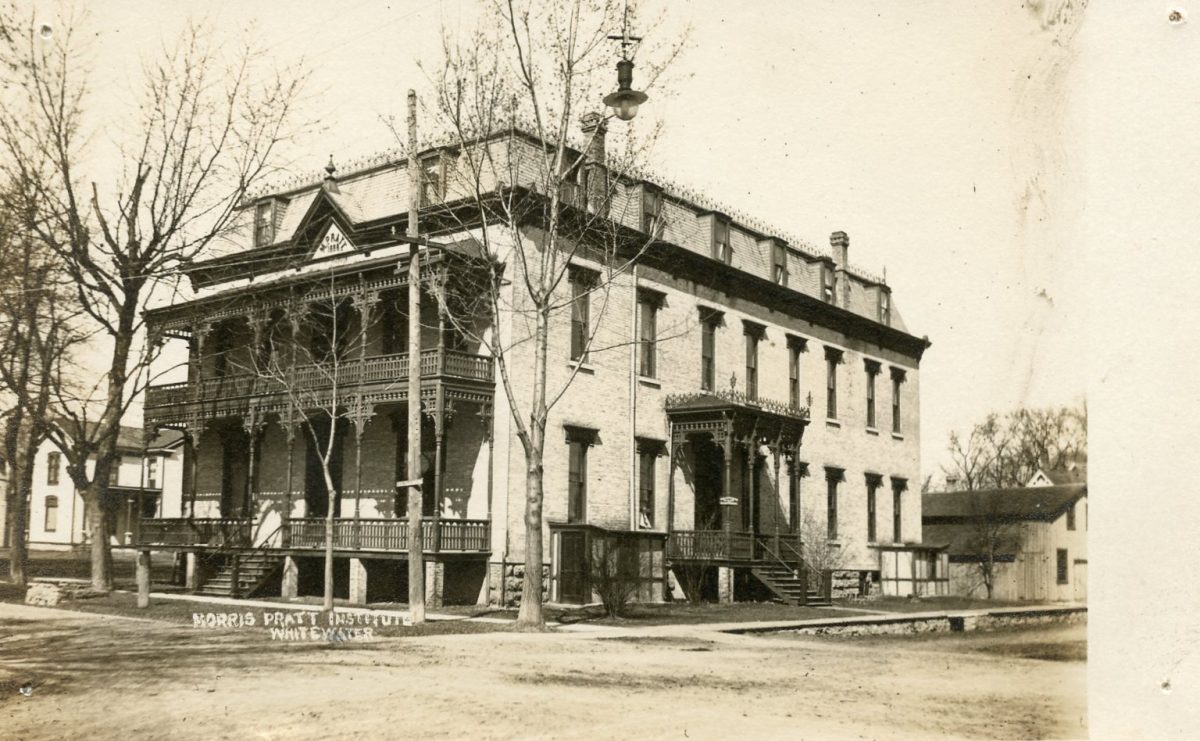One of the first things people learn about Whitewater is the nickname, “Second Salem.” Based on the stories of the “witches of Whitewater,” this nickname has been popular for many years. But, where does it come from? Like most legends, it is hard to pinpoint the source, but there is some real history that may be behind it. In Whitewater, the supernatural legends may be related to the fact that for almost 50 years, there was a center and school for Spiritualists in Whitewater.
Spiritualism is a belief system that was particularly popular in the United States during the 19th and early 20th centuries. Still practiced in the United States, Spiritualism is the belief that there can be communication, via mediums, with those who live in the spirit world. Communication with the spirits is used by the living to further their understanding of the world from those who have passed on.
So, how did Whitewater get a Spiritualist center? Morris Pratt was a local farmer and practicing Spiritualist who built a “Temple of Psychic Science” in Whitewater in 1889. The large three-story Spiritualist temple was a center for Spiritualist learning and practices such as lectures, seances, and spirit healing. In 1902, Pratt died and his followers decided to turn the Spiritualist temple into a School for Spiritualists. Moses Hull, one of the most prominent Spiritualists in the United States came to Whitewater with his wife, Mattie, to run the school.
The Morris Pratt Institute offered courses in general studies and in Spiritualist practices. The school taught mediums how to properly conduct seances and readings, but much of the training involved a study of religions and the bible. By 1902, many Spiritualists were also Christians including Moses Hull, himself.
The Morris Pratt Institute operated between 1902 and the mid-1930s when the popularity of Spiritualism waned and the economic Great Depression prevented many people from pursuing higher education. The Pratt Institute moved to the Milwaukee area where it still operates as an online spiritualist school. The building in Whitewater was used as a dormitory for students in the late 1940s, then was vacant until it was demolished in 1962.
During the 20th century, the Morris Pratt Institute was often called “Spook’s Temple” by local residents and many made fun of the school. The fact that most spiritualist mediums were women and that women held high positions in Spiritualism, may have given rise to the idea that women Spiritualists were “witches.” Especially in the past, women who participate in activities that some people think are outside their proper roles are often called names and the association of Spiritualism and witchcraft was made by those who did not understand it as early as the mid-19th century.
So, while its fun to think of Whitewater as “Second Salem” and home to the “Whitewater Witches,” the real story of Spiritualism is important in Whitewater. Spiritualism was a significant historic social and religious movement in the United States and the Morris Pratt Institute was the only school for Spiritualists in the country. While some of the Spiritualists’ practices were unusual and may have given rise to the spooky legends in Whitewater, Spiritualism was a real and fascinating part of the city’s history.

